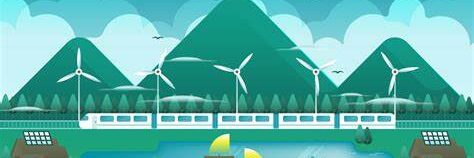Recycling plastic bottles into sustainable and eco-friendly products is a powerful way to address plastic waste and promote environmental stewardship. Here’s an overview of the process and the types of products that can be made:
Recycling Process
- Collection: Used plastic bottles are collected from households, businesses, and recycling centers.
- Sorting: Bottles are sorted by type of plastic, typically polyethylene terephthalate (PET) or high-density polyethylene (HDPE).
- Cleaning: The bottles are cleaned to remove any impurities like labels, caps, and residues.
- Shredding: The bottles are shredded into small flakes.
- Melting and Reforming: The flakes are melted and reformed into pellets, which serve as raw material for new products.
Products Made from Recycled Plastic Bottles
1. Clothing and Textiles
- Polyester Fabrics: Recycled PET can be spun into polyester fibers used to make clothes, backpacks, and outdoor gear.
- Shoes: Companies now use recycled plastic for soles and uppers in footwear.
2. Household Products
- Furniture: Chairs, tables, and benches made from recycled plastics are durable and weather-resistant.
- Storage Containers: Food-safe storage containers and reusable bottles.
- Decorative Items: Vases, planters, and art pieces crafted from recycled materials.
3. Construction Materials
- Composite Lumber: Used for decking, fencing, and outdoor furniture.
- Insulation: Lightweight and durable materials for thermal and acoustic insulation.
4. Packaging
- New Bottles: Many beverage companies reuse recycled PET to make new bottles.
- Food Packaging: Trays and containers made from recycled plastics.
5. Consumer Goods
- Bags: Recycled plastic bags and tote bags.
- Toys: Eco-friendly toys for children.
- Electronics: Casings for gadgets and appliances.
6. Art and Crafts
- Artists and designers create innovative pieces using recycled plastic for exhibitions, installations, and practical items.
Advantages of Recycling Plastic Bottles
- Reduces Plastic Pollution: Limits the waste in oceans and landfills.
- Conserves Resources: Reduces the need for virgin plastic production, saving oil and energy.
- Lowers Carbon Footprint: Producing items from recycled plastics emits less greenhouse gas.
- Promotes Circular Economy: Encourages reuse and keeps materials in circulation.
Challenges and Solutions
- Challenge: Contamination in recycling streams.
- Solution: Public education on proper disposal and sorting.
- Challenge: Downcycling reduces quality.
- Solution: Invest in advanced recycling technologies like chemical recycling.
- Challenge: Limited market for recycled goods.
- Solution: Policies and incentives to promote the use of recycled materials.
Promoting the recycling of plastic bottles into sustainable products is a vital step toward a greener, more sustainable future. By increasing awareness and adopting innovative practices, we can significantly reduce plastic waste’s environmental impact.
